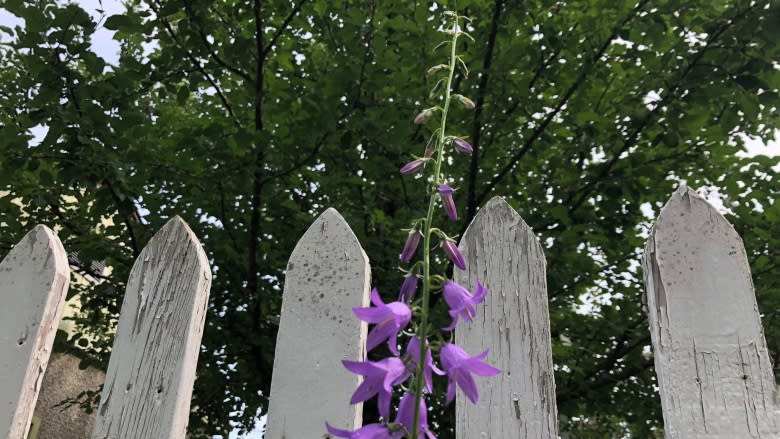Attention, gardeners: creeping bellflower is a zombie weed
With trumpet-shaped blooms and tall stately stems, the creeping bellflower has charmed many uninitiated gardeners.
But don't be fooled by their innocent beauty, warns Rob Sproule, the owner of Salisbury Greenhouses in Sherwood Park.
The creeping bellflower is more zombie weed than decorative wildflower, Sproule said.
The problematic weeds can lie dormant for years and spring back to life from the cold, black earth — and will choke out all other perennials in their path.
They often sprout up uninvited, and the spontaneous blooms are nearly impossible to kill.
"I always compare them to zombies because if you don't get all of them, it just starts again," Sproule said in an interview with CBC Radio's Edmonton AM.
The undead
Creeping bellflowers aren't native to Canada. They were introduced from Europe as an ornamental plant and the invasive species has run rampant across the West.
For the first couple of years, the flowers will be pretty and deceivingly well-behaved. But they'll soon plague every corner of a garden, doing serious damage to native species.
In 2013, the plant was added to the city's noxious weed list. Bylaw officers are patrolling Edmonton neighbourhoods for signs of the pesky plant. Property owners who fail to root out an infestation could face fines ranging from $250 to $5,000.
"Not that long ago it used to be sold as an ornamental plant in gardening centres and greenhouses and things like that because we didn't know how nasty it was," Sproule said.
"Everything's fine until it's not fine and you can't get rid of them."
The bellflower thrives in dry or wet soils, either in full sun or full shade. It can lay dormant for years and, if there are no insects to pollinate the plant, it will pollinate itself.
It spreads by both seed and by rhizome, a hidden network of roots under the soil. If any shred of the deep subterranean network survives, a new single-minded army of weeds will re-emerge, Sproule said.
In what Sproule described as a "nightmare," each seed pod can produce 3,000 seeds. The seeds have wings that helps them drift across fences to quickly plague entire neighbourhoods.
They are largely immune to chemicals, Sproule said. Gardeners can try to to kill the root system by wrenching the plants out by hand, but may never exterminate the brawny beauty.
"You can weaken it, you can starve it, or you can dig down a foot and replace your whole yard," he said.
"That will work until it comes in from your neighbour's place."



